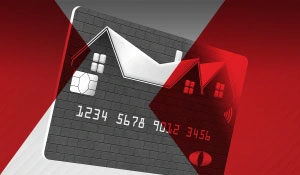In the mortgage industry, the time between when a hopeful borrower submits their loan application and the loan actually closing is 50 days on average, according to the Origination Insight Report by ICE Mortgage Technology. During this period, a borrower’s credit profile may change drastically. From taking on additional debt and late payments to being sent to collections, a borrower who qualified for a loan just a few months ago may no longer be eligible. This can result in significant revenue loss for the lender.
Known as the “quiet period,” the time between the commencement of origination and closing can wind up being a risky blind spot for lenders. When undisclosed debt is found after closing, the investor may require the lender to buy back the loan, the last thing a lender wants. The consequence of undisclosed debt can cost borrowers and lenders alike.
According to LexisNexis True Cost of Fraud for Real Estate Study, for every $1 of fraud, it costs $5.34 to recover that money, while non-depository originators, such as mortgage lending companies, spend an average of $4.66 to recover every $1 of fraud. Moreover, one in 131 mortgage applications was estimated to have indications of fraud and one in 164 refinance applications, according to CoreLogic’s 2022 Mortgage Fraud Report.
Those numbers are far from insignificant, especially when considering your bottom line as a lender.
How to identify and prevent undisclosed debt
Undisclosed changes to a borrower’s credit report aren’t always intentional, and it’s not always considered fraud. But even when the borrower is not purposefully misleading their lender, the repercussions can be costly. That’s why the best defense is a good offense.
Quality credit counseling at the time of a loan application can work wonders for stopping undisclosed debt or other credit changes before they do damage. Since not all borrowers know about the risks of undisclosed debt, lenders should encourage their customers to educate themselves while also providing standard advice such as not making any large credit purchases during origination, like cars or furniture.
While it may seem like unearthing undisclosed debt is as simple as running the credit report regularly during the origination process, that isn’t necessarily the answer. Credit reports show credit from a specific point in time, and there is still a substantial risk that the report will change prior to closing.
This also fails to provide the lender with much ability to stop a consumer from completing a transaction that could compromise their ability to qualify. This practice may still result in lost revenue and incurred costs of processing and underwriting a loan that doesn’t end up closing.
Preventing loss with debt monitoring
Debt monitoring systems monitor a borrower’s credit profile and provide lenders with daily alerts regarding any changes to the credit profile that may compromise a borrower’s ability to qualify. Monitoring can begin at any point in the loan process and can even offer a glimpse into new credit inquiries that haven’t been reported as new debt yet.
This type of monitoring can continue throughout the loan process all the way to final closing, giving lenders last-minute insight that might end up being crucial. While lenders can choose to use just one or two of the three credit bureaus for their credit monitoring, using three-bureau monitoring is the best bet for preventing undisclosed debt from sneaking by during the origination process.
How to solve for undisclosed credit changes
CoreLogic Loan Quality Debt Monitoring provides frictionless integration with ICE and monitoring can be started and stopped via automation, giving it a modern twist to monitoring. The company’s debt monitoring solution allows lenders to start and stop their service with Encompass Partner Connect. They also offer batch via SFTP, API, simultaneous ordering with Loan Safe Fraud Manager and Loan Safe Risk Manager, and through their automated AutomatIQ Borrower application.
CoreLogic provides lenders with a report they can keep in their loan file showing the monitoring history and any reported activity to share with investors post-closing. This means lenders can rest assured that loan buy-backs are far less likely to happen in the future.
To learn more about CoreLogic Loan Quality Debt Monitoring, visit corelogic.com.




